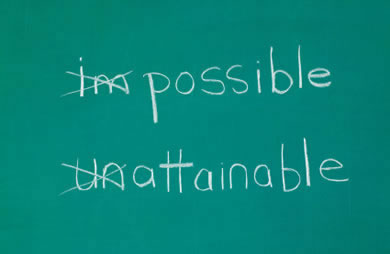
Once you’ve created your vision statement for your weight-loss or wellness journey, you already have a sense of the direction you want to go. The next step is to translate that vision into short- and intermediate-term goals and define simple, actionable steps you can start today.
Characteristics of Effective Goals
1. Enjoyable and Rewarding
Goals should feel motivating and exciting, not stressful. When your goals are enjoyable, you’re more likely to stick with them.
Example: Instead of forcing yourself to exercise in a way you dislike, choose activities you enjoy—like walking with a friend, dancing, or biking. You’ll feel good doing them, which makes it easier to keep going.
2. Realistic and Achievable
Set goals that match where you are now and allow you to experience success. Achievable goals build confidence and create momentum.
Example: Start with 15–20 minutes of movement a day and gradually increase as your fitness improves. Small wins add up and help you stay motivated.
3. Clear and Specific
Vague goals are hard to follow. Make your goals clear and actionable so you know exactly what to do and can track your progress.
Example: Instead of “eat healthier,” try “include a serving of vegetables with lunch and dinner each day” or “drink water instead of soda at lunch.”
4. Time-Oriented
Adding a timeline helps you stay focused and celebrate progress. Break larger goals into smaller steps to make them feel manageable and rewarding.
Example: If your goal is to lose 10 pounds, set a target of 2–3 pounds per month. Celebrate each milestone as a sign of progress and keep yourself motivated.
5. Positive and Inspiring
Frame your goals around what you want to do, not what you want to avoid. Focusing on positive actions encourages a happier, more sustainable lifestyle.
Example: Instead of “stop eating junk food,” try “enjoy more fresh fruits and colorful vegetables every day.” This way, you’re adding nourishing choices instead of feeling restricted.
6. Flexible and Adaptable
Life can be unpredictable, so goals should have room to adapt. Flexibility helps you stay on track without feeling frustrated if plans change.
Example: If your day is busy and you can’t fit in your usual workout, try a 10-minute walk or stretching session instead. Every small step counts toward your goal.
Remember: Progress Over Perfection
Your journey is about growth and learning, not perfection. Celebrate every step you take, even small ones. Building new habits takes time, and every healthy choice is a win.
By setting goals that are enjoyable, realistic, clear, positive, and flexible, you turn your vision into meaningful action and create a healthy lifestyle that fits your life and makes you feel good every day.













